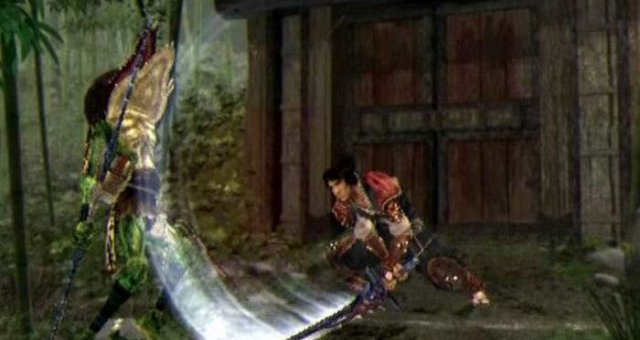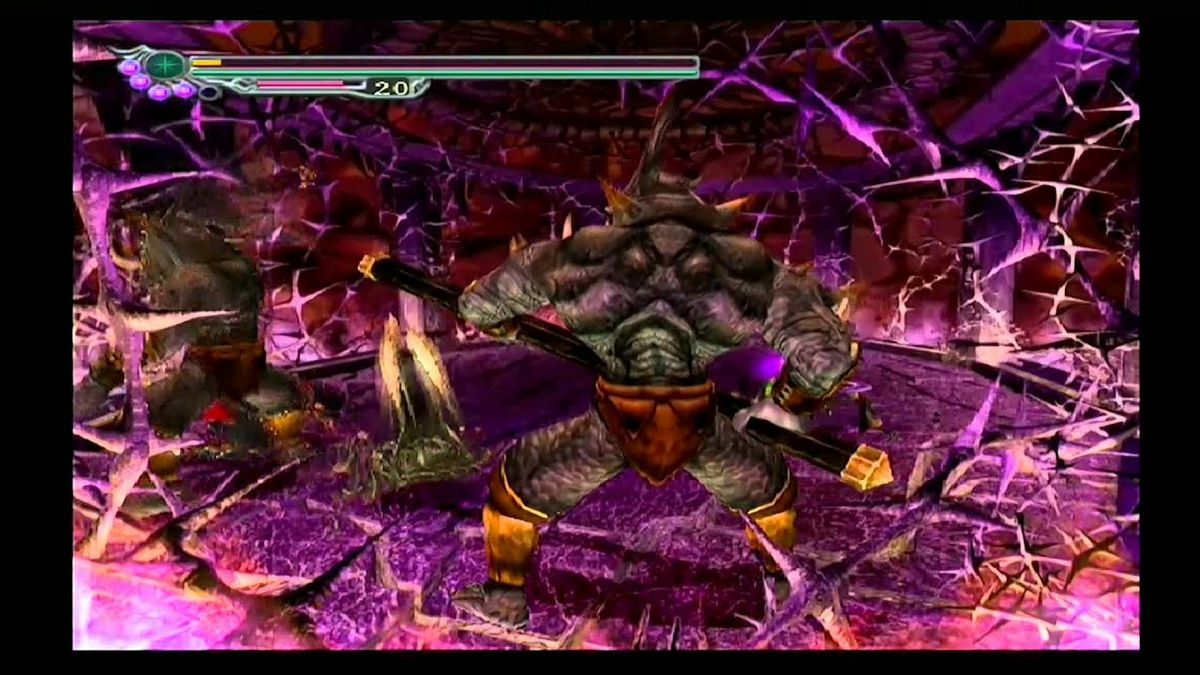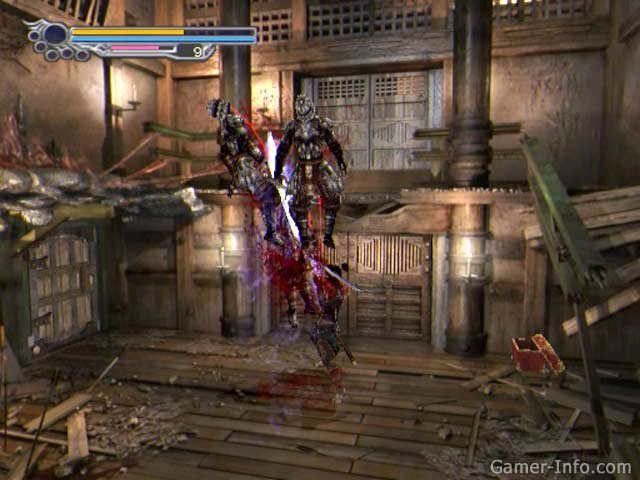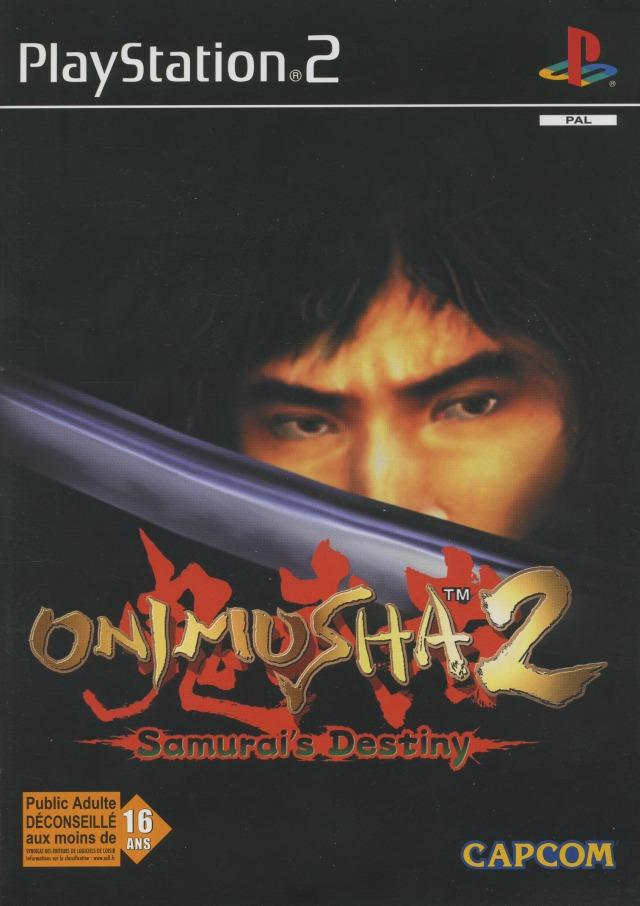
Onimusha 2: Samurai’s Destiny is a classic action-adventure game developed and published by Capcom for the PlayStation 2. Released in March of 2002, the game offers players an immersive journey through feudal Japan, complete with stunning graphics and intricate gameplay mechanics. As the second installment in the Onimusha franchise, Samurai’s Destiny builds on its predecessor’s success while introducing new characters, elements, and challenges to keep fans on their toes.

This article will explore all facets of Onimusha 2: Samurai’s Destiny – from its storyline and characters to its combat system and level design. We’ll delve into what makes this game unique from other action-adventure titles released around the same time period, highlighting both its strengths and weaknesses. Whether you’re a die-hard fan of Japanese culture or simply looking for your next video game obsession, this article will provide you with everything you need to know about Onimusha 2: Samurai’s Destiny.
- Exploring the historical and cultural references in Onimusha 2: Samurai’s Destiny
- The evolution of gameplay mechanics in Onimusha 2 and how it compares to its predecessor
- Analyzing the narrative structure and character development in Onimusha 2: Samurai’s Destiny
- Examining the design choices behind the game’s enemies, bosses, and weapons
- Unpacking the role of music and sound effects in creating an immersive experience for players
- Investigating how Onimusha 2 fits into Capcom’s larger library of action-adventure games from that era
- Reviewing critical reception to Onimusha 2 upon release compared to modern-day opinions on it as a classic title within gaming culture
- Discussing potential avenues for a revival or remake of this beloved franchise entry amid nostalgia-driven trends across entertainment media today
Exploring the historical and cultural references in Onimusha 2: Samurai’s Destiny
The game takes place in the year 1573, during the Sengoku period, an era marked by civil war and political instability. Players take on the role of Jubei Yagyu, a samurai tasked with defeating Nobunaga Oda, a powerful warlord who seeks to unify Japan under his rule.
The game draws heavily from Japanese folklore and history, incorporating elements such as demons known as Oni and legendary figures like Musashi Miyamoto. In addition to these references, Onimusha 2 also explores themes such as loyalty, betrayal, duty and honor which are integral parts of samurai culture.
Furthermore, the game features stunning visuals that pay homage to traditional Japanese art forms such as ukiyo-e woodblock prints. From intricately designed armor sets to detailed landscapes depicting historic locations like Osaka Castle or Kiyomizu Temple in Kyoto; every aspect of this game immerses players in ancient Japan.
In conclusion, Onimusha 2: Samurai’s Destiny stands out not only for its gameplay but also for its dedication to exploring historical and cultural aspects of feudal Japan. Through its use of traditional art styles and incorporation of legends from Japanese folklore; it provides an immersive experience that transports players back in time while showcasing some unique insights about Japanese culture during those times.
The evolution of gameplay mechanics in Onimusha 2 and how it compares to its predecessor
The game introduces a new protagonist named Jubei Yagyu and takes place years after the events of the original game.
One notable improvement is the introduction of multiple playable characters with unique abilities and combat styles. This allows for greater variety during gameplay and gives players more options when dealing with enemies. Additionally, Onimusha 2 features larger environments that are more open-ended than those found in Warlords. Players are given more freedom to explore these areas and discover hidden secrets.
Another significant change is the addition of a new weapon upgrade system that encourages experimentation with different weapons. As players progress through the game, they can collect various items known as “souls” which can be used to enhance weapons or create new ones altogether.
Overall, Onimusha 2 offers a more refined experience than its predecessor by building upon what made Warlords successful while introducing fresh elements to keep things interesting. Fans of the original will appreciate these improvements while newcomers will find plenty to enjoy as well.
Analyzing the narrative structure and character development in Onimusha 2: Samurai’s Destiny
The game mechanics revolve around the player taking control of Jubei Yagyu, a samurai who embarks on a journey to confront Nobunaga Oda. Throughout the game, players experience growth in both Jubei’s character arc and his relationships with other characters.
The narrative structure revolves around the unfolding events and reveals hidden truths about each character’s past. Each level brings new challenges that help build upon Jubei’s backstory or reveal fresh insights into his allies’ lives. A notable aspect of Onimusha 2: Samurai’s Destiny is how it blends historical facts with fictional elements seamlessly.
Character development plays an essential role in creating immersive gameplay for Onimusha 2: Samurai’s Destiny players. From Ekei Ankokuji, who initially appears as an opportunistic thief but later becomes one of Jubei’s closest friends, to Kotaro Fuma, whose ninja skills prove invaluable throughout the story—each character undergoes significant changes as they move from being strangers to trusted allies.
Overall, analyzing the narrative structure and character development in Onimusha 2: Samurai’s Destiny highlights why this game remains popular even after two decades since its release. Its intricate storytelling mechanisms create emotionally charged situations that resonate with players long after completing their quests while keeping them engaged through every twist and turn along the way.

Examining the design choices behind the game’s enemies, bosses, and weapons
The game’s enemies are characterized by their unique abilities and strengths, which make them formidable opponents for the player. Each enemy type has its own set of attacks and weaknesses that players must learn to overcome in order to progress through the game.
The bosses in Onimusha 2: Samurai’s Destiny are also designed with great attention to detail. Each boss has its own distinct appearance and fighting style that challenges players’ skills and strategic thinking. Boss battles require careful planning and execution of different tactics based on each boss’s individual behavior patterns.
Finally, weapons play a crucial role in the gameplay experience of Onimusha 2: Samurai’s Destiny. The weapon upgrade system allows players to enhance their arsenal by collecting souls dropped by defeated enemies or found throughout the levels. Players can then use these souls at save points scattered across the levels to improve their current equipment or buy new ones altogether.
Overall, examining the design choices behind Onimusha 2: Samurai’s Destiny’s numerous combat elements reveals how much thought went into every aspect of this action-packed adventure game. From enemy types with varying abilities to well-designed bosses challenging even skilled gamers as well as upgrading your weapons providing exciting opportunities for customization – all contribute towards making this one exceptional title worth playing!
Unpacking the role of music and sound effects in creating an immersive experience for players
Onimusha 2: Samurai’s Destiny, one of Capcom’s beloved action-adventure games, perfectly demonstrates how sound effects and musical score can heighten the game’s overall atmosphere and bring its narrative to life.
The music in Onimusha 2 is derived from traditional Japanese instruments such as shakuhachi flutes and taiko drums – thereby enhancing the medieval Japan setting that serves as the backdrop for the game. The ambient soundscape also plays a crucial role in immersing players into this world; footsteps on different surfaces, creaks of wooden doors opening or closing, or birds chirping make it all feel more realistic.
Sound effects are critical in providing feedback to player actions within any video game. In Onimusha 2: Samurai’s Destiny this is no exception with satisfying sword slashes when defeating enemies which perfectly aligns with their demise animation. Additionally, eerie whispers heard throughout gameplay serve to enhance tension during cutscenes- highlighting important plot points whilst keeping players emotionally invested.
Overall, by combining brilliantly crafted audio cues both diegetic (heard by characters) & non-diegetic (heard only by the audience) alongside powerful musical scores makes Onimusha 2: Samurai’s Destiny an example par excellence of how sound design can add depth to storylines whilst bringing games alive beyond just visual graphics alone.
Investigating how Onimusha 2 fits into Capcom’s larger library of action-adventure games from that era
It is the second installment of the Onimusha series, which incorporates elements of survival horror, puzzle-solving, and role-playing games into its gameplay mechanics. As an expert on this subject matter, I can confidently say that Onimusha 2 fits seamlessly into Capcom’s larger library of action-adventure games from that era.
During the early 2000s, Capcom was at the forefront of producing some of the most critically acclaimed action-adventure titles in gaming history. The likes of Resident Evil, Devil May Cry and Dino Crisis were all part of their highly successful portfolio during this time frame. However, what set Onimusha 2 apart was its unique blend of Japanese folklore with fast-paced combat facilitated by responsive controls and challenging enemies.
Furthermore, much like other games in Capcom’s library from that era – including their flagship RE franchise – Onimusha 2 features intricate puzzles that require players to think outside-of-the-box to progress through levels successfully. This added element enhances immersion within the game world while simultaneously providing a sense of accomplishment upon completion.

Overall, it is easy to see how Onimusha 2 stands tall amongst other classic titles produced under Capcom’s banner during this period. Its fusion between various genres such as survival-horror and RPG creates an unforgettable experience for players who love immersive storytelling coupled with thrilling gameplay mechanics.
Reviewing critical reception to Onimusha 2 upon release compared to modern-day opinions on it as a classic title within gaming culture
Upon release, critical reception to the game was generally positive, with praise directed towards its improved graphics and gameplay mechanics. However, some critics noted that the game lacked innovation and failed to push the series forward.
In modern times, Onimusha 2 is often regarded as a classic title within gaming culture. The game’s engaging story and intense action sequences have earned it a place among the greats of its time. Despite criticisms of lackluster innovation at launch, players now appreciate how Onimusha 2 expanded upon its predecessor’s formula while retaining everything that made it unique.
The success of Onimusha as a franchise can be attributed to many factors – solid gameplay mechanics coupled with rich storytelling being among them – but ultimately what has stood out most about this particular entry is how well it holds up today. Even after almost two decades since release date passed by, fans still return for more every year because they simply cannot get enough of this masterpiece from Capcom Studios!
Discussing potential avenues for a revival or remake of this beloved franchise entry amid nostalgia-driven trends across entertainment media today
With nostalgia-driven trends across entertainment media today, the possibility of reviving or remaking this franchise entry has become an intriguing subject for many fans.
One potential avenue for a revival or remake is through modern technology and graphic capabilities. The advancements in gaming graphics since the initial release would allow developers to bring Onimusha 2’s feudal Japan setting to life with even more vivid detail than before. Additionally, advances in artificial intelligence could enhance gameplay mechanics such as enemy AI and character interactions.
Another potential avenue is through expanding on the game’s storyline and characters. This approach could involve adding new playable characters that have their own unique fighting styles and abilities while also deepening the already established narrative elements from previous entries. Further exploration into Japanese mythology could also add depth to the game’s world-building.
Ultimately, whether it be a revival or remake of Onimusha 2: Samurai’s Destiny, there are various avenues that can be explored by developers who want to tap into nostalgia-driven trends across entertainment media today while still bringing something fresh to fans old and new alike.
In conclusion, Onimusha 2: Samurai’s Destiny is a remarkable game that has left an indelible mark on the gaming industry. Its unique blend of action and adventure elements combined with its excellent storyline makes it a truly immersive experience for players.
The game’s attention to detail in terms of graphics, sound effects and music cannot be overstated. The developers have gone above and beyond to create an authentic feudal Japanese setting that transports players back in time.
Additionally, Onimusha 2: Samurai’s Destiny offers a range of challenges and puzzles that keep the gameplay fresh and exciting throughout. Players must use their skills wisely to defeat enemies, solve puzzles and progress through the story.
Overall, Onimusha 2: Samurai’s Destiny sets the bar high for other games in its genre. It represents a true masterpiece that combines captivating visuals with thrilling gameplay mechanics resulting in an unforgettable gaming experience for both casual gamers as well as hardcore fans alike.
Read More:- Conquer All with Samurai Warriors 2: Xtreme Legends – Get ready for the Ultimate Battle!.
- Experience the Thrill of Dueling in Yu-Gi-Oh! GX: The Beginning of Destiny Game – Now Available!.
- Get Ready to Battle in Capcom vs. SNK 2 EO: The Ultimate Fighting Game Experience!.
- Ultimate Battle: Capcom vs. SNK Pro – Who Will Reign Supreme?.
- Conquer Feudal Japan in Total War: Shogun 2 – Fall of the Samurai Strategy Game (67 characters).
- Conquer Japan's Feudal Era in Nobunaga's Ambition: Rise to Power Game – Unleash your Strategic Prowess!.
- Experience Epic Battles in Game Kessen II – An Action-Packed Strategy Game!.